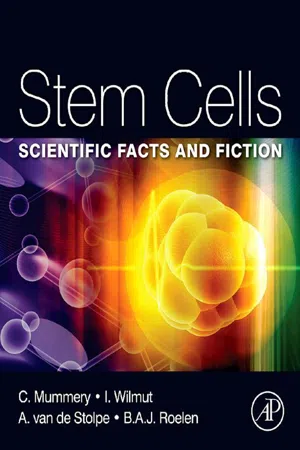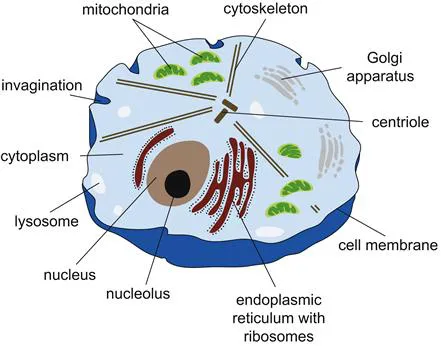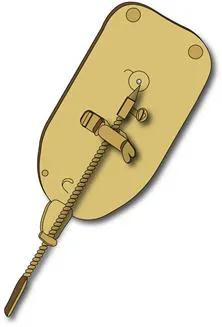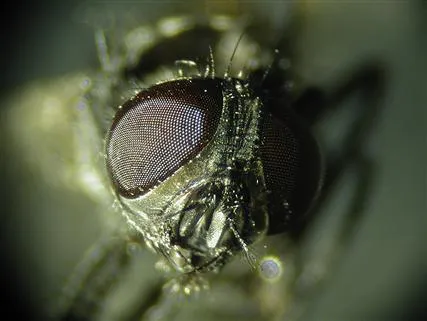Organisms are Composed of Cells
DNA, Genes and Chromosomes
How is the Amount of mRNA Regulated?
Transcription Factors
Epigenetic Regulation
RNA Interference
From mRNA to a Functional Protein
From DNA and Proteins to a Cell with a Function …
DNA Differences Between Genomes: Mutation or Variation?
Diseases Due to Variations and Genome Mutations
Dominant or Recessive?
DNA Outside the Nucleus: Bacterial Remains
Cell Lines and Cell Culture
This book is about stem cells. Stem cells and their applications in clinical medicine, biotechnology and drug development for pharmaceutical companies, involve many facets of biology; from genetics and biochemistry to synthetic scaffolds and three-dimensional architecture for tissue engineering. For this reason the most important molecular and cell biological principles needed to understand stem cells will be introduced to the reader in this chapter.
Organisms are Composed of Cells
Humans and animals, as well as plants and trees, contain many different functional organs and tissues. These, in turn, are composed of a large variety of cells. Cells are therefore the basic building blocks which make up the organism. All animal cells have a similar structure: an outer layer called the plasma membrane, made up of a double layer of lipid molecules, and an inner fluid known as cytoplasm. The cytoplasm contains a variety of small structures called organelles, each of which has a specific and essential function within the cell. Most cell organelles are themselves separated from the cytoplasm by their own membranes. The form of the cell is determined and supported by the cytoskeleton, a flexible scaffolding composed of polymers of protein molecules which form a network that shapes the cell and allows it to move and “walk”. Inside the cell countless proteins – sometimes in cooperation with RNA molecules – facilitate the chemical and physical reactions and transport of other molecules required to carry out specific cellular functions.
The most prominent organelle viewed under the microscope is the nucleus. This contains the chromosomes, which are in part made up of DNA – one long molecule of DNA per chromosome – representing the
Schematic representation of an animal cell. The cell contains a fluid called the cytoplasm, enclosed by a cell membrane. The nucleus contains the genetic information, the DNA. The shape of the cells is determined by their cytoskeleton. Proteins and lipids are generated and assembled in the endoplasmic reticulum. The Golgi apparatus is then responsible for further transport within the cell. Lysosomes are small vesicles with enzymes that can break down cellular structures and proteins that are no longer required, while the energy necessary for the cell is generated by the mitochondria.
organism’s blueprint. Although cells can have different shapes and functions, the DNA sequence in all cells of a given individual is in principle identical (with the exception of certain blood cells). Other prominent structures in the cell are the mitochondria. These organelles are present in large numbers and generate the energy required by the cell. Cells with very large energy requirements, like heart cells, contain correspondingly higher numbers of mitochondria. Energy is also required, among other things, for creating messenger RNA (mRNA) and linking amino acids to each other in the ribosomes to form proteins. Rudimental proteins thus made are delivered to the tubular structures of the endoplasmic reticulum, where they are processed into actual working proteins in yet another organelle, the Golgi apparatus. They are then transported in small vesicles, termed vacuoles, to the site in the cell where they are required to exert their own specific function. Each cell is thus a highly dynamic structure with its own powerhouse, factories and transport systems.
1.1 ANTONI VAN LEEUWENHOEK
Although plants and animals have been studied for centuries, the realization that organisms are composed of cells is of relatively recent origin. This is simply due to the fact that in the past there were no technologies available for cells to be seen. It was only after the invention of the microscope (around 1595) that cells could be made visible for the first time.
The Dutchman Antoni van Leeuwenhoek was one of the first microscopists; he dedicated himself to the discovery and description of the hitherto invisible world of biology. Van Leeuwenhoek was born on October 24, 1632 in Delft, The Netherlands. Quite unlike other great scientists of his day, he did not receive a university education, but was entirely self-taught. His naïve approach, disregarding any form of scientific dogma, allowed him to think freely and be guided only by his own enthusiasm and interest.
The microscopes made by van Leeuwenhoek were in fact magnifying glasses of outstanding quality.
Antoni van Leeuwenhoek was by trade a salesman in household linen and used magnifying glasses to examine the quality of cloth. He ground his own lenses using diamond shavings, which he obtained from Delftdiamond cutters. He also built his own microscopes, basically simple instruments containing a single lens, but ground with high precision, sufficient to achieve magnifications of around 300×. van Leeuwenhoek’s microscopes consisted of two metal plates fixed to each other with a lens between them. The lens was fixed and the object to be examined was placed on top of a metal holder that could be moved using a set-screw, while focusing occurred through a screw at the back of the instrument. The entire construction was less than 10 cm in size. van Leeuwenhoek’s microscopes were in essence only very strong magnifying glasses, quite different from the composite microscopes that also existed at the time. However, it was his curiosity and insight – combined with the quality of the lenses and his ability to illuminate the objects properly – that allowed him to discover the microscopic world. He examined water from ditches, tooth plaque, baker’s yeast, stone dust, blood and sperm.
Antoni van Leeuwenhoek studied many small objects with his microscope, among which were the composite eyes of insects, and tried to determine the number of facets on each eye.
The Delft physician Reinier de Graaf introduced van Leeuwenhoek to the Royal Society in London, after which he published his findings in a total of 200 letters (in Dutch) which he sent to the Society. The letters, which needed to be translated into English or Latin for publication, are anecdotal, containing a panoply of random observations, but uniquely detailed in their descriptions. van Leeuwenhoek achieved international fame with his observations, but in a letter written in 1716 he said that he “did not strive for fame, but [was] driven by an inner craving for knowledge”. This drive he believed to be stronger in him than in most other people. van Leeuwenhoek died on August 16, 1723.
DNA, Genes and Chromosomes
The DNA (deoxyribonucleic acid) in each cell of our body contains all of the information needed to create a complete individual. In humans, DNA is divided into around 23,000 different genes, each of which encodes the blueprint for one or more proteins. What does the information in the DNA look like, and how is it translated into the production of proteins? How does the cell decide which proteins to make?
A DNA strand is composed of a long series of nucleotides. Each nucleotide consists of a deoxyribose molecule, which forms the backbone of the DNA molecule, and is linked to one of four bases: adenine (A), guanine (G), thymine (T) and cytosine (C). Nucleotides are interconnected by phosphate groups, forming a long chain. The specific sequence of the different bases represents the core of the DNA code. Two single strands of DNA combine to form a double-stranded DNA molecule as complementary bases form base-pairs held together through hydrogen bridges: adenine binds to thymine, while guanine always binds to a cytosine.
Normally, the DNA in a chromosome is double-stranded and forms a long chain. These long double-stranded DNA molecules (one DNA molecule can be up to 10 cm long) form the famous Watson and Crick DNA “double helix” structure, itself wrapped around a core of a special family of proteins called histones. The histone proteins provide the extremely long DNA molecule with the support and guidance to fold into a complicated three-dimensional form, which fits into the small space of the nucleus and enables correct use of each part of the DNA molecule. In the nucleus, this intricate combination of DNA and proteins is called chromatin. The ends of the DNA molecules which form the caps of the chromosomes are called telomeres. These telomeres protect the chromosome ends from DNA damage but are shortened after each cell division.
DNA can be isolated from cells and “precipitated” (separated from liquid). It then appears as a white glue-like substance. This meter-high glass pot contains the same amount of DNA as would be present in all of the cells of an adult human.
A single DNA strand is a long polymer composed of sugar (deoxyribose) and phosphate groups that together form the backbone of the DNA. Either one of the possible four bases adenine, thymine, cytosine or guanine are coupled to the deoxyribose strand.
Cells can continue dividing until the telomeres are “used up”; this is the process of cellular aging or senescence.
The number of chromosomes is specific for each animal species. Human cells have 23 pairs of chromosomes, including one pair of sex chromosomes – X and Y. Females have two X chromosomes in each cell, while males have one X and one Y chromosome. The other human chromosomes are numbered from 1 to 22, and called autosomal chromosomes or autosomes. Chromosomes in a cell can be visualized using a special staining technique; this reveals a karyotype image of the chromosomes. This technique is used in the clinic to investigate whether cells from a patient have a normal number of chromosomes, whether the chromosomes are intact, and whether an XY (male) or XX (female) pattern is present.
Functional units of DNA are called genes and these ...






